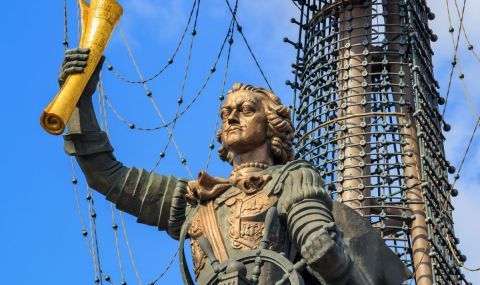A little before 5 o'clock on February 8, 1725, Peter the Great passed away. He was 52 years old. He ascended the throne at the age of only 10. Russia had been living in the Middle Ages since his childhood. It was a kingdom with vast territories in Asia. The Russian army was hopelessly backward. Its elite was engaged in palace coups and intrigues behind the walls of the Kremlin. Frequent campaigns against the Crimean Tatars and the Ottoman Empire suffered constant failures.
Only 42 years later, when Peter was on his deathbed, Russia was already an empire, a factor that everyone took into account. Peter had recently finally defeated the strongest army in Europe - the Swedish. His army had 250,000 bayonets of trained fighters and experienced commanders. Under the flag of the Baltic Fleet sailed 141 warships and several hundred rowing vessels, Russian ships also sailed the Sea of Azov to the south. Russia had a modern administration and a system of schools.
Tsar Peter himself could barely write. He compensated for his lack of education with endless curiosity and practice. Even as a teenager, 20 cannons and the best Russian artilleryman were brought to the estate where he lived to train the young tsar in the intricacies of handling cannons.
He used a fishing boat to explore the lake. In 1697, he sent the so-called Great Embassy to Western Europe. A retinue of about 250 people, headed by three plenipotentiary ambassadors, set off across Europe and over the course of a year and a half visited Riga, Königsberg (today Kaliningrad), Brandenburg, the Netherlands, England and Austria.
Under the name Peter Mikhailov, a sergeant from the Preobrazhensky Regiment, the tsar himself participated in the mission incognito. However, it gave Peter European experience and determination to change Russia and redirected his foreign policy ambitions from south to north towards the Baltics and Europe. This turned out to be the key moment in the country's transformation into a world power.
During the Great Embassy, Peter fell in love with the Netherlands. He met prominent scientists, inventors, artists and others.
The tsar worked for several weeks at the shipyard of the East India Company on the construction of the battleship "Peter and Paul", specially named after him. In London, the Russian Tsar visited a foundry, an arsenal, parliament, Oxford University, the Greenwich Observatory and the Mint, which was headed by Isaac Newton himself. Then he traveled to Manchester, where he became acquainted with the ideas of modern urban planning, which he later used in the construction of St. Petersburg.
Peter's plans to visit Venice and meet with the Pope in Rome were thwarted by a report of a new coup attempt in Moscow. The putsch of the Archers was suppressed before Peter could return home, but immediately upon his arrival he ordered the public execution of the coup plotters and began radical reforms.
Peter issued a decree on the wearing of German clothes and banned the caftans of the nobles. He crossed out the traditional Russian calendar and from January 1, 1700 introduced the Julian calendar. He ordered the beards and mustaches of the nobility to be shaved and imposed a heavy tax on those who disagreed. He also put pressure on the church, issuing a law that only people over 50 years of age could become monks, so that younger people could serve in the army. He replaced land and property taxes with poll taxes, thus expanding the tax base and collecting money for the renewal of the army and the construction of a navy. He began feverishly to found schools, marking the beginning of organized education in Russia. He founded the Russian Academy of Sciences, the first gymnasium in Russia and the first university.
After the Great Embassy, Peter's ambitions were directed towards reconquering a Russian outlet to the Baltic Sea. In 1700, the moment seemed appropriate, when the barely 18-year-old Charles XII ascended the throne of the greatest power in Europe - Sweden. A coalition of Sweden's old enemies - Russia, Prussia, Denmark and Norway - began the Great Northern War.
Peace was concluded in 1721, after Charles XII was killed in battle in 1718.
Almost immediately after the victory on 22 October 1721 in the new capital of St. Petersburg, Peter I was proclaimed Emperor of All Russia by the Russian Senate and the Synod of the Church. Prussia and the Netherlands immediately recognized the new title of the Russian Tsar, and later all of Europe.
In 1703, Peter decided to build a city on a piece of land conquered from the Swedes during the Northern War at the mouth of the Neva River on the Gulf of Finland, in order to secure access to the Baltic Sea. The first and most important building in it during the war was the Peter and Paul Fortress and its first stone was laid on May 15, 1703. The main part of the city was built from 1704 to 1717 with the labor of serfs and prisoners. They cut down forests, filled in swamps and built dikes, streets and buildings. Over 60,000 serfs and 40,000 Swedish prisoners left their bones on the construction sites of the city.
In 1712, Peter declared the still unfinished city his capital. He christened it Saint Petersburg - the Dutch pronunciation of the name of Saint Peter, to whom the city was actually dedicated.
